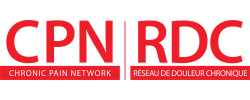| Return |
Patient Evidence Summary

I have chronic neck pain. Would it help me to add interferential current stimulation to my physiotherapy?
Adding interferential current stimulation to your regular physiotherapy or neck-specific exercises may help to reduce your pain and improve your quality of life. Talk to your physician or your physiotherapist to see if interferential current stimulation is right for you.
What is the evidence?
Researchers looked at patients receiving interferential current stimulation in addition to supervised exercise and compared them to patients receiving supervised exercise alone. They measured pain, disability, and quality of life after treatment. They found that:
- Patients receiving interferential current stimulation had more reduction in pain, less disability, and higher quality of life than patients receiving exercise alone after 2 weeks
- Patients in both groups experienced a reduction in pain
- Patients receiving interferential current stimulation had less anxiety and depression than those receiving only exercise
- This was a small study with 42 patients in each group
- The study did not follow patients longer than 2 weeks
What kind of study was this?
This was a randomized controlled trial (RCT). In an RCT, patients are randomly assigned to receive the treatment under study or a comparator treatment.
Who participated in the study? This study included 84 people who had non-specific mechanical chronic neck pain in Spain.
How was the study done? The study compared adding interferential current stimulation to supervised exercise with supervised exercise alone.
Interferential current stimulation | vs | Supervised exercise |
|---|---|---|
Participants received interferential current stimulation in a one-on-one setting. Stimulation was given for 25 minutes. During treatment, the current intensity was increased. The intensity of the treatment was adapted to each patient’s individual sensitivity. Patients also received the same supervised exercises as the control group, as described. | Participants received active physiotherapy exercises for neck and shoulder muscles. It included active stretching, muscle strengthening, and ocular-cervical re-education exercises. Participants completed the exercises in group sessions and also at home for at least 30-45 min per day. In a one-on-one format, participants were also encouraged to improve self-care and their own perception of self-efficacy. Participants received 10 sessions each week for 2 weeks. |
Why was this research done?
Neck pain is common and can be debilitating for patients, limiting range of motion and impairing general activities of daily living. Supervised therapeutic exercise has previously been shown to improve neck pain.
Interferential current stimulation produces a low-frequency current which may stimulate the nerve and other tissues, helping to relieve pain. The authors wanted to investigate whether interferential current stimulation could increase the effectiveness of supervised therapeutic exercise.
This Evidence Summary is based on the following article:
Albornoz-Cabello M, Perez-Marmol JM, Barrios Quinta CJ, et al. Effect of adding interferential current stimulation to exercise on outcomes in primary care patients with chronic neck pain: a randomized controlled trial. Clin Rehabil. 2019 Apr 22:269215519844554. doi: 10.1177/0269215519844554. PubMed
Published: Tuesday, June 11, 2019
Please note that the information contained herein is not to be interpreted as an alternative to medical advice from a professional healthcare provider. If you have any questions about any medical matter, you should consult your professional healthcare providers, and should never delay seeking medical advice, disregard medical advice or discontinue medication based on information provided here.
|
This Evidence Summary was printed from the PAIN+ CPN website on 2025/04/03. To view other Evidence Summaries or to register to receive email notifications about new Evidence Summaries, please visit us at https://www.painpluscpn.ca/Articles/EvidenceSummaries |

|






 , McMaster University
, McMaster University